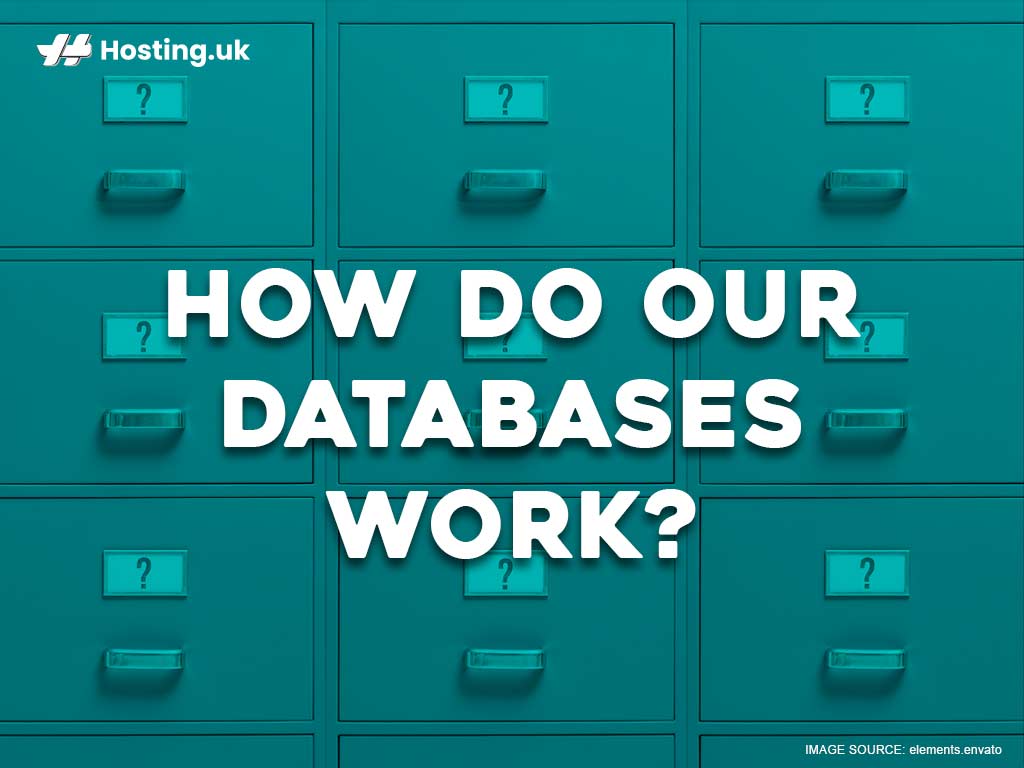If you own or operate a self-hosted site and technology is not your specialty, it can be hard. But, our web hosting products are designed to ensure that everyone, even those who are not technologically savvy, can use them effectively. So if you’re wondering how the database in your cPanel works, we’re going to walking you through the process. But before we get into those details, we’ll look at the basics, such as what is a database, how it works and the different types that exist.
Table of Contents
What is a database?
A database as the word suggests is a ‘base’ or place to store your data. But officially, it’s defined as a collection of information specifically arranged, organised and stored electronically in a computer system.
It can also be a collection that is structured to be easily and quickly retrieved by a computer.
How a database works?
While a database by itself is organised, it does not operate on its own. It has to be controlled by something else that makes it work the way it’s intended to. That’s where a Database Management System – DBMS– comes in. A DBMS is really just a computerised data-keeping system. It gives programmers and users a logical way to create, recover, update and manage information. Most Database Manage System uses what’s called a Structured Query Language – SQL- to write and query information, which allows for that material to be easily managed, modified, updated, etc.
Let’s quickly look at Structured Query Language, before we move on. SQL can be either shared (SharedSQL) or private.
What is a SharedSQL?
It’s a database that’s on a shared server. This means there are other bases on the sharing the server’s resources. However, only you will have access to your information. This format allows for more cost-effective access to hundreds or thousands of databases.
What is a PrivateSQL?
PrivateSQL is the opposite to SharedSQL. You are the only one using that space, so the resources are all yours. This means that in performance is consistent regardless of what’s happening. It is also more expensive than a SharedSQL, but gives users more rights and more opportunities for customisation.
Types of databases
There are several types of databases and users select which ones they’re going to use depending on how the data is going to be used. Here are the top five types of databases and their use.
1. Cloud databases
Databases are collections of data and a cloud database is no different in that regard. It differs though, in its enormous flexibility. Cloud database can be structured or unstructured and can exist on a public, private or hybrid cloud computing platform.
Note also that cloud databases are categorised as traditional or database as a service or DBaaS.
2. Relational databases
Relational databases data is generally arranged as a set of tables containing columns and rows. These databases are reportedly the most efficient way to access structured information.
3. Non-relational databases (NoSQL)
A NoSQL offers a great level of flexibility. They allow data, semi-structured or unstructured, to be stored and manipulated. This is one of the things that differentiate non-relational databases differ from relational databases, which dictates how all the composition of all data being entered in the system.
4. Multi model database
Multi model allows for different data types to be stored in one place. It does this by combining varying types of database models into one, integrated back end.
5. Document/JSON database.
These databases are specifically designed for storing, retrieving, and managing document-oriented information. Document databases are prided as a novel way to store data in JSON format instead of the usual columns and rows.
6. Self-driving database
If you’ve heard of autonomous databases, you’ve heard of self-driving database. They are the same thing. It’s cloud-based and is dubbed the latest and most revolutionary type of database. Self-driving database uses machine learning to program database modification, security, backups and updates. It also performs other management tasks that’s generally done by database administrators.
There are other types of databases, such as:
- Data warehouses
- Object-oriented
- Open source
- Distributed
- Graph
- OLTP
How to access our database?
To answer this question, we go back to something we mentioned earlier – Structured Query Language or SQL. As mentioned before, most Database Manage System uses SQL to write and query information, which allows for that material to be easily managed, modified, updated, etc.
Put simply, SQL tells the server what to do with the data it receives. It gives specific instructions such as data access control, query, manipulation and identity. Each instruction will result in a specific action being taken. For example, if the SQL command is a data access control, it means the server will provide security protocols to protect the information in its possession. A data manipulation instruction would allow for the modification of data and that could be the adding, altering, deleting or sorting of the information. Further to that there is what’s called MySQL which is software that uses the SQL syntax or language to communicate database to database.
How MySQL Works
MySQL allows clients to connect to a server through a specific network. Once connected, using one or multiple devices, each user can send requests to the server from the graphical user interface or GUI that’s on their device screen. These requests are made using precise SQL statements. The server will then honour the request, provided that it understands the instructions given or request that was made.
Summary
The types of databases mentioned above can be either installed by anyone or by a computer. Either way, accessing them shouldn’t be difficult, as instructions are generally provided when you make your selection.
